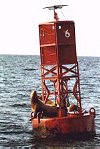 OLYMPIC PIPE LINE RECORDS SHOW VALVE SHUTDOWN WAS NOT THE FIRST
OLYMPIC PIPE LINE RECORDS SHOW VALVE SHUTDOWN WAS NOT THE FIRST
Saturday 25, 1999
Brier Dudley, Seattle Times
The unexpected valve closure that preceded Olympic Pipe Line's
deadly June 10 rupture in Bellingham wasn't an isolated event.
Federal regulators said yesterday that company records show
valves in the pipeline closed without commands from operators 59
times since December, suggesting the valves were flawed or there
are problems with the operation or design of the pipeline.
The Office of Pipeline Safety (OPS) also said Olympic appears to
have erred by not inspecting enough of the 279 pipe defects it
discovered in 1996 tests.
Those findings were included in a sweeping safety order issued
yesterday. It said the agency has "continued concern about the
operation and management of the pipeline," which delivers nearly
all the fuel used in Western Washington and Oregon.
Olympic said it was willing to conduct pressure tests outside
Bellingham, but it is concerned about the high pressures sought in
the tests. President Fred Crognale said there would be an
"inquiry" to "further understand the basis of the order."
Crognale also said the order would reduce flows by 1 million
gallons a day and have a "significant, further impact" on shippers,
airlines and other pipeline users.
The order expands on earlier ones that forced Olympic to close
portions of its line, reduce pressure and test valves. It also
reinforced concerns about the training of pipeline operators and
draws attention to older pipe that's considered likely to fail.
"I continue to find that operations of the 16-inch portions of
Olympic Pipe Line without corrective measures would be
hazardous to life, property and the environment," wrote Richard
Felder, associate administrator for pipeline safety.
Earlier, the agency ordered Olympic to analyze how its valves are
working, particularly around a new storage facility in Mount
Vernon where a valve malfunctioned June 10. Investigators say
that malfunction was part of a tragic sequence of mechanical and
possibly human errors that led to three deaths after the spilling of
277,000 gallons of gasoline in Bellingham.
The order was prompted by a rupture of older pipe last Saturday
in Bellingham during pressure tests the company was doing in
preparation for restarting the line there. The pipe had been filled
with water and pressure had been boosted above normal - 15
percent above, according to Felder; 33 percent, according to
Olympic - when 6 feet of weld tore open.
Also prompting the order were revelations found in Olympic
rec ords and the company's slow response to an Aug. 30 spill
that polluted Renton's groundwater.
Although the Renton spill was caused by mechanical failure,
Felder said "the reaction of the employees on duty and the timing
of reporting of the failure to OPS and emergency responders raise
concerns about pipeline operations and design."
Felder also noted that Olympic has yet to produce training
records of the operators on duty June 10. So far it has only
provided training records up to 1994.
Olympic has said repeatedly that it is cooperating with the safety
office and with investigators from the National Transportation
Safety Board (NTSB).
Yesterday, Olympic spokeswoman Maggie Brown could not
explain the missing training documents or the valve closures. "I
can't comment on it at this point," she said.
Brown could not say how long the new order would delay
restarting the pipe.
Meanwhile, U.S. Rep. Jay Inslee has organized a public briefing
and tour of the pipeline starting at 8:30 a.m. today at Rose Hill
Junior High in Redmond. He'll be joined by officials from Eastside
cities and a safety inspector that Felder recently assigned to
Washington state.
Inslee wants to know where additional testing will be done.
"We need to understand what tests will be performed and how to
interpret the test results in order to make informed decisions about
what to do next," he said in a news release.
In yesterday's order, Felder ordered Olympic to conduct costly
and time-consuming pressure tests on sections made of older
"electric resistance welded" (ERW) pipe made by Lone Star, a
manufacturer known to have produced weak pipe.
Lone Star pipe is in most of the line from Whatcom County to
Mount Vernon - all of which must be pressure tested - and in
parts of the line south to Portland and west to Anacortes. Brown
could not provide a more specific accounting yesterday.
Regulators have known about the weakness of pre-1970 ERW
pipe for years but generally don't distinguish among
manufacturers. Olympic is almost entirely pre-1970 ERW, but
only 20 percent from Bellingham to Renton is Lone Star pipe,
according to investigation documents obtained by The Seattle
Times through a Freedom of Information Act request.
Charles Batten, a retired NTSB investigator in Virginia consulting
with the Bellingham victims' families, said other types of pre-1970
pipe have also had problems.
"If I were the officials out there, I would be seriously questioning
OPS as to why only Lone Star pipe" needs testing, he said.
Agency spokeswoman Pat Klinger said Lone Star pipe was
singled out because its pipe failed last weekend and some other
types of pre-1970 ERW are stronger. She also said the agency
has to be careful that its orders are justifiable.
"With these orders you really have to have valid justification to go
in and shut an operator down," she said. "The pipe that failed the
other day was Lone Star."
Olympic needs the safety office's approval to restart the line
through Bellingham and restore full flows throughout the system.
After the June 10 rupture, it was ordered to cut pressure 20
percent in the section from Bellingham to Mount Vernon.
Yesterday's order forced it to cut pressure 20 percent
systemwide.
Exactly what happened June 10 won't be known until the NTSB
completes its investigation in a few months, but here's what the
agency has disclosed so far:
Olympic's control-room computers crashed and a valve closed
without commands from operators, causing a pressure surge. The
surge raced through the pipe until it ruptured at a weak spot.
The rupture occurred in Whatcom Falls Park, in the vicinity of
defects the company had known about since the 1996 testing.
The NTSB is still studying whether it ruptured exactly at the
defects.
City of Bellingham contractors excavated within a foot of the
pipeline in 1994 and 1995, and the ruptured stretch of pipe had
markings that could be from a backhoe, but there's no evidence
yet that the contractors struck the pipe.
When the computers resumed working, Olympic controllers
restarted pumps to send more fuel into the pipe until the computer
ordered a shutdown, about an hour after the first problems arose.
Related Links
Seattle Times-- Seattle Times Website
Olympic Pipeline Co-- Olympic Pipeline Company Website
OPS-- The Office of Pipeline Safety Website
|

